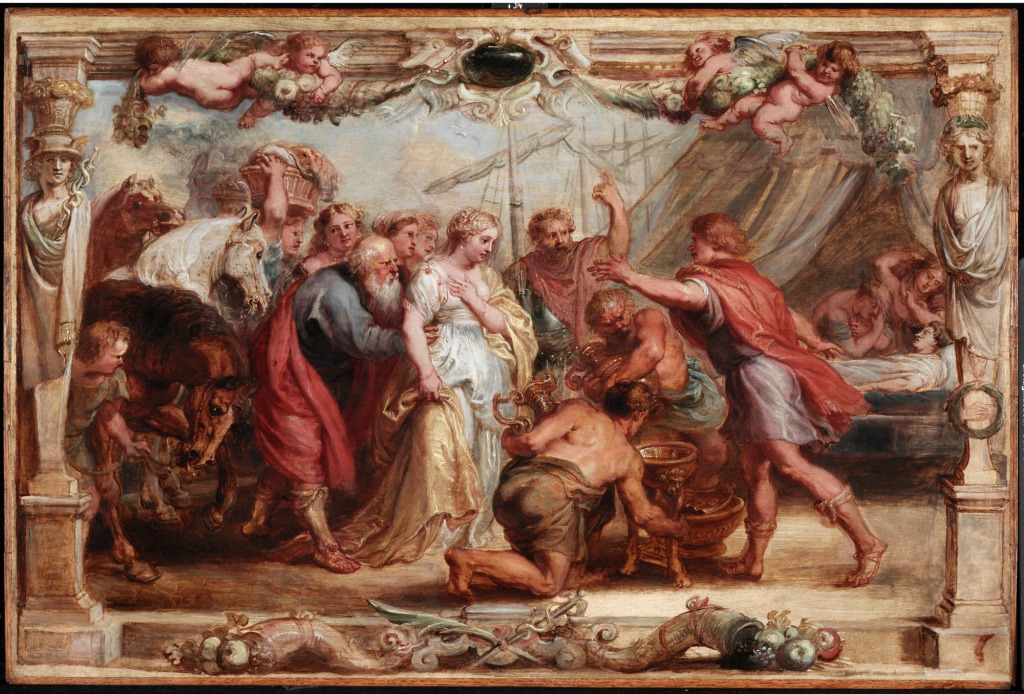4.5/5
A powerful, feminist take on Homer’s Iliad, Pat Barker’s The Silence of the Girls makes a striking case for the continuously expanding list of contemporary retellings of the Trojan War.
Who is the woman of the Trojan War? Pat Barker skillfully navigates the largely male-dominated literary landscape within Greek mythological discourse. She carves out a figure of the woman as more than a body constantly at risk of crossing the boundaries between wife, widow, concubine: its purpose, to give and serve. Centered around and largely narrated by Briseis, the story begins with Achilles’ destruction of the city of Lyrnessus and the consequent selection of Briseis as his prize for the successful battle. Immediately, the reader is immersed into the gruesome grittiness of war; Barker does not spare the details of the stench of sweat in the air, bands of rats running from one hut to another, breath reeking of alcohol, and blood – blood everywhere you look.
Briseis, by being a Trojan and a woman, permits us to see life in the Greeks’ camp through the lens of a helpless bystander. Women abused, raped, traded, passed around. Perhaps it is not too coincidental then, that the title mimics the story of Clarice Starling from The Silence of the Lambs, her traumatic childhood memory of watching lambs being slaughtered haunting her. The tragedy of the powerlessness of someone reduced from wife of a king to commoner is poignantly explored through a dramatic sequence Barker has borrowed directly from Euripides, when Briseis and others are forced to witness the killing of Priam and Hecuba’s teenage daughter in the name of sacrifice to the gods following the death of Achilles. The image of Hecuba standing over her daughter’s disjointed body, her mouth gagged, offers a moment to reflect on the nature of the war – involved or not, it never misses with its impact.
Although Achilles’ importance to the story is never underplayed – “Great Achilles. Brilliant Achilles, shining Achilles, godlike Achilles!” – he never becomes the focal point of the plot. Instead, Barker paints an incredibly gut-wrenching retelling of the Iliad’s most famous moment: old king Priam visiting the enemy camp alone and unarmed, only to beg Achilles for the opportunity to take back the disfigured body of his son, Hector. The reader can’t help but feel a conglomeration of pity and compassion for Priam – until Briseis’ inner dialogue weighs the situation in front of her against the horrors she has been forced to witness:
I do what no man before me has ever done, I kiss the hands of the man who killed my son. And I do what countless women before me have been forced to do. I spread my legs for the man who killed my husband and my brothers.
Barker’s detailed descriptions of Briseis’ surroundings echo that of Homeric storytelling. Her attention to the physical setting is so impeccable that the reader doesn’t have the time to notice just how immersed they’ve become in Briseis’ experience; it is not long into the book until the description of the clothes, the food, the noise, the grit is rendered practically useless by its establishment as natural early on.
The ‘silence’ included in the title is, in fact, a deafening lament – about the cruelty of war and its often-forgotten victims, about history being written by soldiers and generals, about the grief of the living carrying on the sorrow of the dead. It is itself a thought-provoking riposte to the male-dominated narratives of the Trojan War and, perhaps, the Greek mythology at large. Pat Barker’s The Silence of the Girls is a powerful reminder of the need to reflect on whose voices are hushed when there is a crowd shouting.
Written by Kvitka Perehinets

